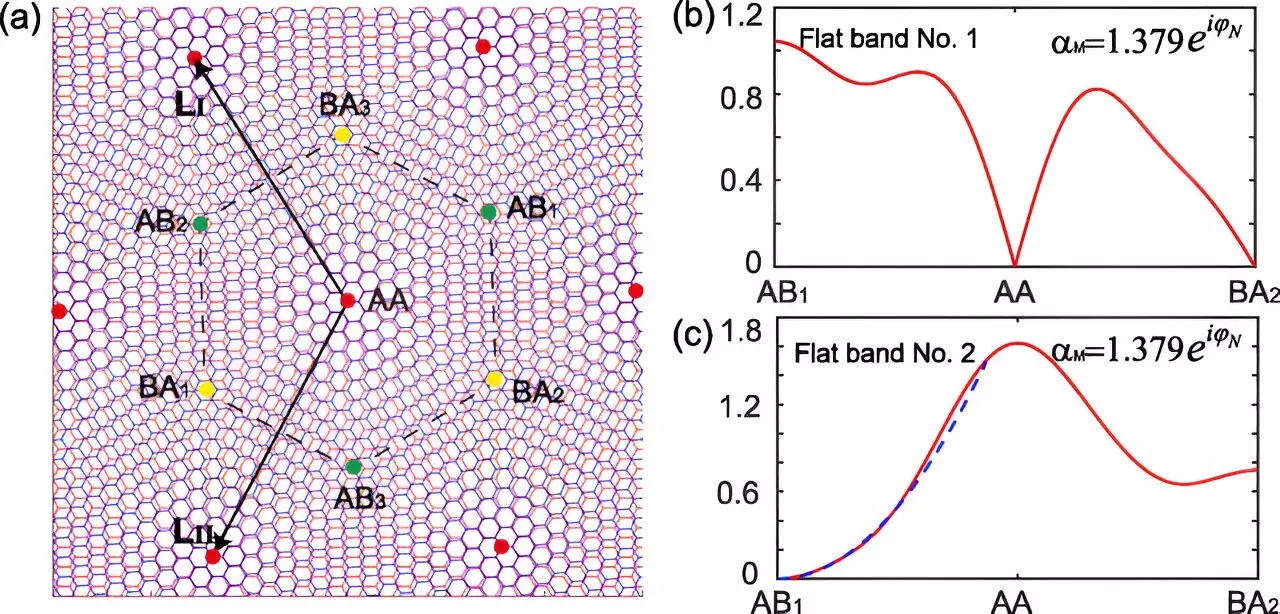In a recent study conducted by RIKEN physicists, it was discovered that magnetic fields can play a crucial role in engineering flat bands in twisted graphene layers. Graphene, a single layer of carbon atoms in a hexagonal lattice, has already been well-known for its unique properties. However, when multiple layers of graphene are combined and twisted at specific angles, a whole new realm of exotic physics is unveiled.
When two or more layers of graphene are stacked on top of each other with a repeating pattern, a moiré pattern emerges due to the rotation of one of the layers. This moiré pattern leads to a significant change in the properties of the graphene layers. At specific twist angles, the bilayer graphene can demonstrate behaviors such as correlated insulator and superconductivity. The introduction of a spatially varying magnetic field further enhances these properties and opens up new possibilities for exploration.
Graphene’s unique band structure is characterized by a linear relationship between an electron’s energy and momentum at certain points. In twisted bilayer graphene, this band structure is altered, resulting in the formation of flat bands at specific twist angles. These flat bands minimize the kinetic energy of electrons and emphasize interactions between electrons, leading to various strongly correlated electronic phenomena like unconventional superconductivity.
Impact of Magnetic Fields
The study conducted by Ching-Kai Chiu and Congcong Le from RIKEN iTHEMS, along with their team, mathematically demonstrates that introducing a spatially alternating magnetic field can create additional magic angles and flat bands that are quadruply degenerate. This higher degeneracy could potentially give rise to even more correlated phenomena, providing a new degree of freedom to tailor the electronic band structure.
The discovery of the impact of magnetic fields on twisted graphene layers has opened up a new avenue for research in the field of exotic physics. There is now a search underway to identify other materials that exhibit similar phenomena and host flat bands. The systematic exploration of new platforms that support flat bands will pave the way for further understanding and manipulation of electronic properties in different materials.
The interaction between magnetic fields and twisted graphene layers has the potential to revolutionize the field of physics and materials science. The discovery of flat bands and their impact on electronic properties marks a significant step towards harnessing the full potential of graphene and other layered materials for future technological advancements. The findings from this study will undoubtedly inspire further research and exploration into the world of exotic physics and its applications in electronic devices.


Leave a Reply